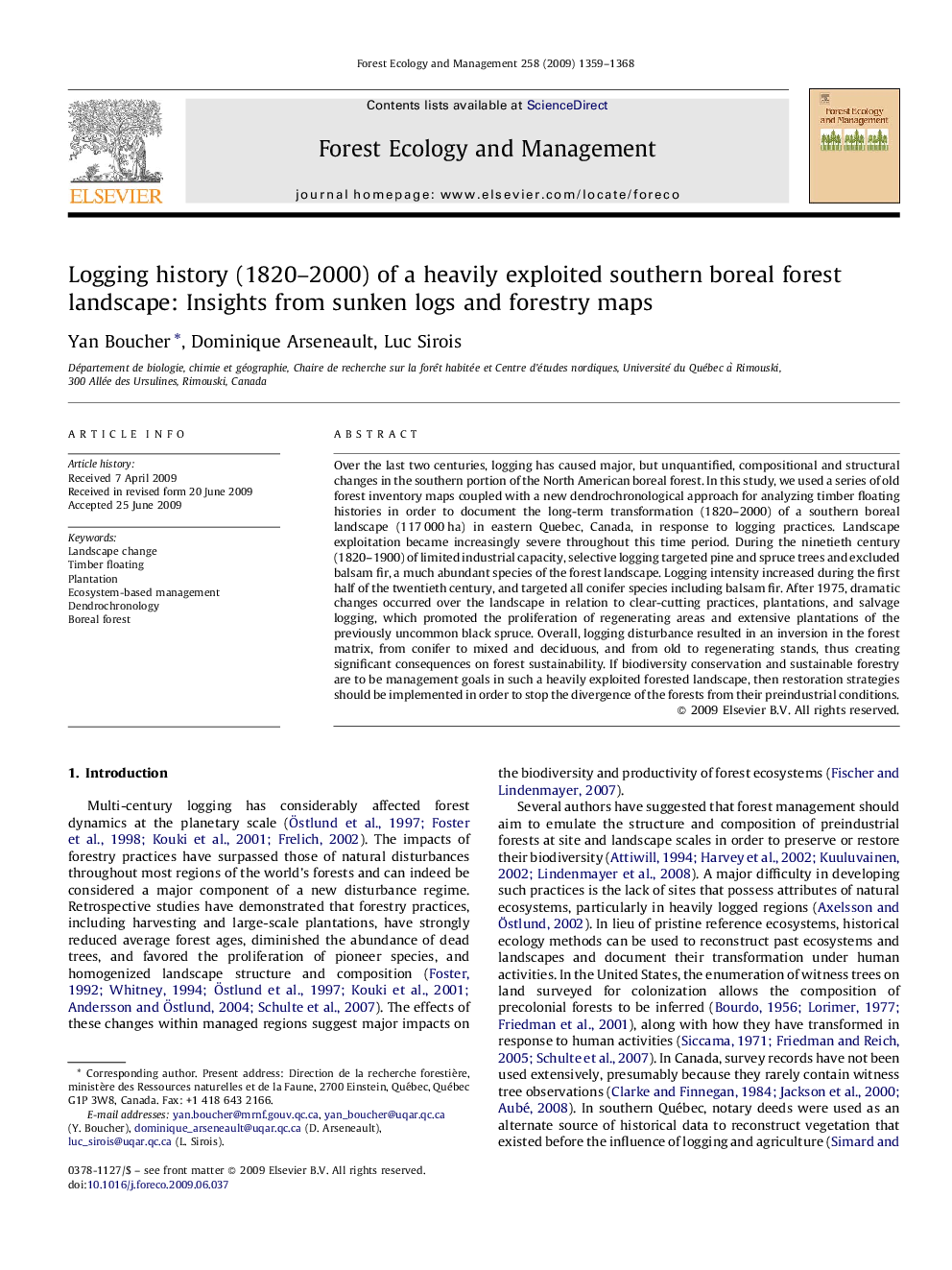| Article ID | Journal | Published Year | Pages | File Type |
|---|---|---|---|---|
| 88972 | Forest Ecology and Management | 2009 | 10 Pages |
Over the last two centuries, logging has caused major, but unquantified, compositional and structural changes in the southern portion of the North American boreal forest. In this study, we used a series of old forest inventory maps coupled with a new dendrochronological approach for analyzing timber floating histories in order to document the long-term transformation (1820–2000) of a southern boreal landscape (117 000 ha) in eastern Quebec, Canada, in response to logging practices. Landscape exploitation became increasingly severe throughout this time period. During the ninetieth century (1820–1900) of limited industrial capacity, selective logging targeted pine and spruce trees and excluded balsam fir, a much abundant species of the forest landscape. Logging intensity increased during the first half of the twentieth century, and targeted all conifer species including balsam fir. After 1975, dramatic changes occurred over the landscape in relation to clear-cutting practices, plantations, and salvage logging, which promoted the proliferation of regenerating areas and extensive plantations of the previously uncommon black spruce. Overall, logging disturbance resulted in an inversion in the forest matrix, from conifer to mixed and deciduous, and from old to regenerating stands, thus creating significant consequences on forest sustainability. If biodiversity conservation and sustainable forestry are to be management goals in such a heavily exploited forested landscape, then restoration strategies should be implemented in order to stop the divergence of the forests from their preindustrial conditions.
